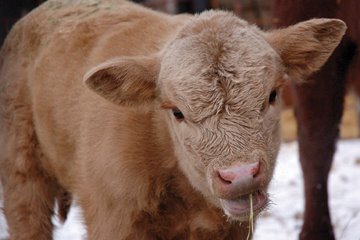There’s little doubt that interest in food safety is front and centre in all parts of Canada’s agricultural industry, and that all players are realizing that Canada’s reputation for food safety is a critical part of successful marketing domestically and globally.
In the beef industry one sign of that is a renewed interest in the Verified Beef Production (VBP) program. The program is attracting Canadian producers in significant numbers, driven in part by its third-party verification system which offers a platform for marketing around food safety.
“There is real evidence that the industry is recognizing consumers’ concerns over food safety and is building on its reputation for acting responsibly,” says Terry Grajczyk, VBP program manager. “When VBP was set up the hope was that it would help anchor Canada’s reputation for food safety. Today, that’s coming true. In many cases, all producers are doing is proving what they are already doing, but they are understanding this program is part of the broader goal for the industry.”
There have been several adjustments made to the program in order to better tailor it to the needs of Canadian beef producers, says Grajczyk. Here’s an overview of ongoing developments.
Program simplified
After starting out as a program covering food quality, animal welfare and food safety, the VBP program updated its manual in 2006 to focus exclusively on food safety. In the process, action items in the manual were divided into clearly-highlighted categories of “must do’s” and “recommendations” with extra emphasis placed on clear wording.
“We had a little bit of misinterpretation in the past between those two categories,” says Grajczyk. “We want this to be as user-friendly as possible to encourage participation.”
Validation process streamlined
Participants who want to be officially registered with the VBP program are verified through a third-party, audit-style process. This is another element of the program that has been adjusted to better meet producer and program needs, says Grajczyk.
“Before September 2006, the optional validation assessment was not clear. This is no longer the case,” she says. “Now, after the initial on-farm audit required to become validated in the program, participants declare their conformance by sending in their records or an annual self-declaration. This reduces concerns producers may have over audit costs while still keeping it credible in the international marketplace.”
Welcome to the Online Edition of Cattle Country!
Updated with every new issue
Past issues will be available in the archive. If you are interested in reading Late Breaking News between paper deadlines, scroll down to the bottom of the page. The most recent information will be posted first.
Past issues will be available in the archive. If you are interested in reading Late Breaking News between paper deadlines, scroll down to the bottom of the page. The most recent information will be posted first.

Friday, March 13, 2009
Subscribe to:
Post Comments (Atom)

No comments:
Post a Comment